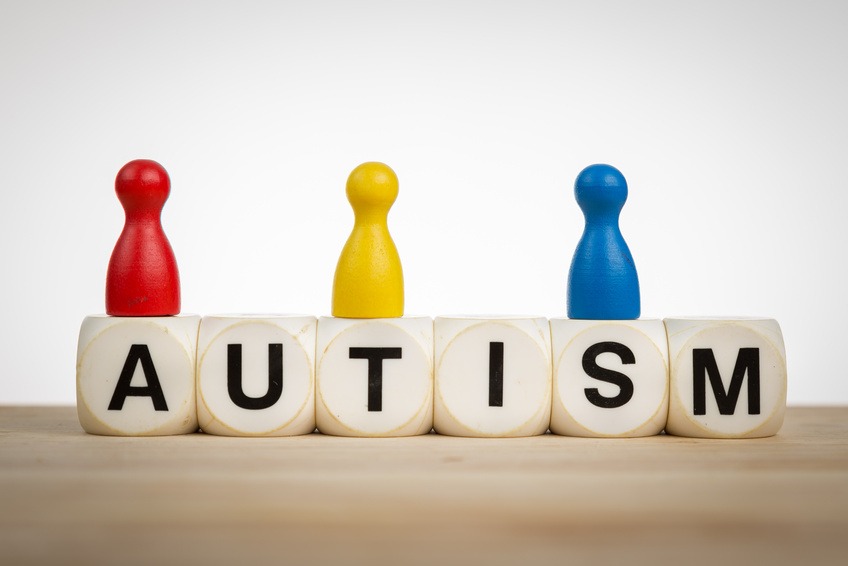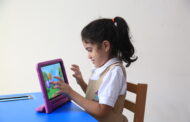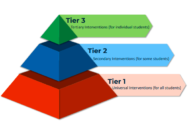By Shaima AlHosani & Ebtihal Mohsin Saleh
SCHS Nurse Unit
1. Introduction
Regarding the potential cause-and-effect relationship between the severity of an individual’s autism and the potential for more serious forms of abuse, it is reasonable to assume that those with more severe autism symptoms are at a greater risk of abuse. This is because those with severe autism have a much lower level of understanding of the world around them and will struggle to communicate effectively with others.
اقرأ ايضا: خصائص وسمات اضطراب ضعف الانتباه والنشاط الزائد -ج3
The relationship between Uric Acid Levels and Disorder-Related Distress in Autism is well-established. Putterman & Carothers (1991) suggested that the individual’s status within the community may also influence the severity of abuse. Given that the general population’s lack of understanding and education about autism already isolates those with autism within the community, this factor may not hold significant weight. In any case, the increased risk of abuse among those with autism is a serious issue in need of further exploration. (Gibbs et al., 2021). (Ratanatharathorn et al., 2021).
Recent studies have shown that people who have been diagnosed with autism are at an increased risk for physical abuse compared to those without such vulnerabilities (Mandell et al., 2005). Behavioral and communication issues, a symptom of autism, are believed to be the cause of this increased risk, although the precise cause remains unknown. Such symptoms may make it difficult for the individual to report abuse of any form, resulting in increasingly violent attacks if the individual has not removed themselves from the situation in fear of further abuse. (Trundle et al., 2023) (Gibbs et al., 2021).
1.1 Background on Autism and Physical Abuse
Since the early 1990s, the public sector has served persons with severe mental illness whose lifetime prevalence of exposure to a traumatic event has ranged from 55% to over 90%. Living in households characterized by interparental violence, single parents, and inconsistent employment has been associated with higher rates of trauma exposure among children with severe mental illness. Research indicates that children with autism are susceptible to experiencing physical abuse at some point in their lives. Whether it is at the hands of a classmate, a family member, or a parent, physical abuse is a reality for many of these children and adults. (Shin et al., 2021) (Kerns et al., 2022).
An information sheet that was prepared by the National Autistic Society and the Ann Craft Trust found that children with autism are 3.5 times more likely to be abused than the general population. Despite the various types of abuse a child or adult may endure, this paper will only focus on physical abuse. (Daniels-White et al., 2023)
The American Psychological Association published a study in 2009 stating that abuse, including emotional and physical harm from a caregiver, is more common among children and adults with autism. Although mental retardation was not a significant predictor of abuse, intellectual functioning and prior improper behavior increased the risk of emotional abuse and neglect. Findings highlight the need to provide abuse prevention information and support for children and adults with autism, as well as their families. This need is particularly urgent for victims of previous inappropriate behavior, and support for functioning improvement may reduce the risk of further abuse. (Trundle et al., 2023) (Gibbs & Pellicano, 2023)
Autism is a pervasive developmental disorder characterized by deficits in social interaction and impaired communication, as well as restricted, repetitive, and stereotyped patterns of behavior. In 1994, the Diagnostic and Statistical Manual of Mental Disorders, Fourth Edition (DSM-IV) included autism under the broader category of pervasive developmental disorders (PDDs). In the DSM-5 (2013), the classification of the PDDs changed, and autism is now included under the category of autism spectrum disorder. (Rosen et al., 2021) (Rice et al., 2022).
1.2 Uric Acid: An Overview
Uric acid is known for its poor solubility, and it is possible for uric acid to precipitate and form crystals in tissue. One of the uric acid precipitates is monosodium urate (MSU) is a uric acid precipitate. MSU is a crystal that causes inflammation in gout arthritis, and it is known that MSU can also initiate an immune response through a pro-inflammatory process. It is possible for MSU to act as danger-associated molecular patterns (DAMPs) that can activate toll-like receptors (TLR) and trigger innate immunity.
TLRs are important molecules found on the surface of immune cells for infection and tissue injury recognition, which can lead to acute and chronic inflammation processes.
Autism is a disease characterized by acute and chronic immune system abnormalities that are associated with inflammation. This might explain another link between uric acid and autism. (Sallustio et al., 2021) (Wang et al., 2023)
Urate (urinary uric acid) is the end product of uric acid metabolism, which has been known for years for its role as an antioxidant and free radical scavenger. Impaired oxidative metabolism and increased free radical activity were reported in people with autism. Xanthine oxidase catalyzes the conversion of xanthine to uric acid, the end product of purine catabolism. The same enzyme also produces free radicals, and purine metabolism is known to be linked to the innate immune system.
Researchers have reported several findings linking purine metabolism to neurological and behavioral disorders. One study found that people with purine nucleotide phosphorylase superactivity, a birth defect in purine metabolism, had severe cognitive problems and autistic traits. Purine and its relatives also have a toxic effect. Hypoxanthine, for example, can induce apoptosis, and elevated hypoxanthine is known to be associated with several neurological disorders. All of these studies at least suggest that purine metabolism might have an important role in several abnormalities of the brain and nervous system. (Thorsen2020) (Bjørklund et al. 2020)
2. The Correlation between Physical Abuse and Uric Acid Levels
When physical abuse is experienced during the prenatal or very early developmental stages, it may have profound effects on the child’s health, both in the short and long term (Anyanwu et al., 2011; Blagojevic et al., 2007; Jevtovic-Todorovic et al., 2003). One clear example of this is data showing strong associations between early abuse and autoimmune diseases, various types of cancer, and increased susceptibility to infections (Chartoff and Merton 1993; Dong et al. 2004; Glaser 2005; Irwin and Miller 2007; Schaub et al. 2009; Segerstrom and Miller 2004; Taylor et al. 2001).
Examining the impact of early stress on immune function can explain many of these health problems, as the central nervous system significantly influences the immune system’s response to stress (Dhabhar 2002; Glaser 2005; Segerstrom and Miller 2004; Taylor et al. 2001).
Uric acid is an organic compound that is the final oxidation product of purine catabolism and is an important antioxidant within the body. Previous research has revealed increased uric acid levels in a series of conditions associated with increased oxidative stress or immune-related damage, including traumatic brain injury (Clausen et al., 2005), multiple sclerosis (Yoshida et al., 1992), schizophrenia (Mazza et al., 2005), and autism (Bodizs et al., 2007; Lopresti and Fitzgerald, 2009; New et al., 2006; Zoroglu et al., 2011).
Zaleski and Taylor (2007) conducted a study at the University of Missouri on rats and first identified the connection between physical abuse and increased uric acid levels. An acute episode of foot shock stress significantly increased serum uric acid levels in rats half an hour after exposure to the stress.
We attributed this to an increase in xanthine oxidoreductase (XOR) activity, a key enzyme in the catabolism of purine to uric acid. We found that increased pro-inflammatory cytokine activity triggers increased XOR activity. In order to cleanse the body of the foreign microorganisms, there has to be an initial release of pro-inflammatory cytokines to recruit immune cells to infected or damaged tissue. This suggests that an increase in uric acid is a direct result of immune system activation and the ensuing oxidative stress. (Giesser et al., 2020) (Goltser et al., 2023) (Wang et al., 2024)
To Be continued …….
References:
- Gibbs, V., Hudson, J., Hwang, Y. I. J., Arnold, S., Trollor, J., & Pellicano, E. (2021). Experiences of physical and sexual violence as reported by autistic adults without intellectual disability: Rate, gender patterns and clinical correlates. Research in autism spectrum disorders, 89, 101866. unsw.edu.au
- Ratanatharathorn, A., Koenen, K. C., Chibnik, L. B., Weisskopf, M. G., Rich-Edwards, J. W., & Roberts, A. L. (2021). Polygenic risk for autism, attention-deficit hyperactivity disorder, schizophrenia, major depressive disorder, and neuroticism is associated with the experience of childhood abuse. Molecular psychiatry, 26(5), 1696-1705. nih.gov
- Trundle, G., Jones, K. A., Ropar, D., & Egan, V. (2023). Prevalence of victimisation in autistic individuals: A systematic review and meta-analysis. Trauma, Violence, & Abuse, 24(4), 2282-2296. sagepub.com
- Shin, S. H., Wright, C., & Johnston, S. (2021). Early Life Experiences Moderate the Relationship Between Genetic Risk of Autism and Current and Lifetime Mental Health. Frontiers in Psychiatry. frontiersin.org
- Kerns, C. M., Lankenau, S., Shattuck, P. T., Robins, D. L., Newschaffer, C. J., & Berkowitz, S. J. (2022). Exploring potential sources of childhood trauma: A qualitative study with autistic adults and caregivers. Autism, 26(8), 1987-1998. sagepub.com
- Daniels-White, O., Odom, J., & Wilthew, M. (2023). The Effects of Child Sexual Abuse on Children with Autism. sfasu.edu
- Gibbs, V. & Pellicano, E. (2023). ‘Maybe we just seem like easy targets’: A qualitative analysis of autistic adults’ experiences of interpersonal violence. Autism. ucl.ac.uk
- Rosen, N. E., Lord, C., & Volkmar, F. R. (2021). The diagnosis of autism: from Kanner to DSM-III to DSM-5 and beyond. Journal of autism and developmental disorders, 51, 4253-4270. springer.com
- Rice, C. E., Carpenter, L. A., Morrier, M. J., Lord, C., DiRienzo, M., Boan, A., … & Wiggins, L. D. (2022). Defining in detail and evaluating reliability of DSM-5 criteria for autism spectrum disorder (ASD) among children. Journal of autism and developmental disorders, 52(12), 5308-5320. nih.gov
- Sallustio, F., Picerno, A., Tatullo, M., Rampino, A., Rengo, C., Valletta, A., … & Falcone, R. M. (2021). Toll-like receptors in stem/progenitor cells. In Toll-like Receptors in Health and Disease (pp. 175-212). Cham: Springer International Publishing. unina.it
- Wang, M., Zhang, H., Liang, J., Huang, J., & Chen, N. (2023). Exercise suppresses neuroinflammation for alleviating Alzheimer’s disease. Journal of neuroinflammation, 20(1), 76. springer.com
- Thorsen, M. (2020). Oxidative stress, metabolic and mitochondrial abnormalities associated with autism spectrum disorder. Progress in molecular biology and translational science, 173, 331-354. [HTML]
- Bjørklund, G., Meguid, N. A., El-Bana, M. A., Tinkov, A. A., Saad, K., Dadar, M., … & Chirumbolo, S. (2020). Oxidative stress in autism spectrum disorder. Molecular neurobiology, 57, 2314-2332. academia.edu
- Giesser, R., Goltser-Dubner, T., Pevzner, D., Shalev, A., Masarwa, R., Canetti, L., … & Segman, R. (2020). Elevated salivary uric acid levels among adolescents with eating disorders. Eating and Weight Disorders-Studies on Anorexia, Bulimia and Obesity, 25, 1821-1825. [HTML]
- Goltser Dubner, T., Giesser, R., Shalev, A., Keller, S., Segman, R., & Galili-Weisstub, E. (2023). Uric Acid Levels and Eating Disorders. In Eating Disorders (pp. 167-179). Cham: Springer International Publishing. [HTML]
- Wang, R., Gao, Y., Wang, P., He, C., & Lu, H. (2024). Association between serum uric acid and bone mineral density in males from NHANES 2011–2020. Scientific Reports. nature.com
- McKenzie, R., Dallos, R., Stedmon, J., Hancocks, H., Vickery, P. J., Barton, A., … & Ewings, P. (2020). SAFE, a new therapeutic intervention for families of children with autism: a randomised controlled feasibility trial. BMJ open, 10(12), e038411. bmj.com
- Kamali, M., Sivapalan, S., Kata, A., Kim, N., Shanmugalingam, N., Duku, E., … & Georgiades, S. (2022). Program evaluation of a pilot mobile developmental outreach clinic for autism spectrum disorder in Ontario. BMC Health Services Research, 22(1), 426. springer.com
- Brown, R. B. (2023). Dysregulated phosphate metabolism in autism spectrum disorder: associations and insights for future research. Expert Reviews in Molecular Medicine. cambridge.org
- Fujii, Y., Matsumura, H., Shirasu, A., Nakakura, H., Yamazaki, S., Kanazawa, T., … & Ashida, A. (2023). Unexpected cause of repeated peritoneal dialysis-related complications: a case study of autism spectrum disorder with normal intelligence quotient in an adolescent. Renal Replacement Therapy, 9(1), 16. springer.com
- Üblagger, D., Auer, H., Bezakova, M., & Kirchlechner, V. (2024). Toxocarosis in a patient with autism spectrum disorder presenting with severe hypereosinophilia and acute respiratory distress: a case report. Parasitology Research. springer.com
22.DeLouize, A. M., Eick, G., Karam, S. D., & Snodgrass, J. J. (2022). Current and future applications of biomarkers in samples collected through minimally invasive methods for cancer medicine and population‐based research. American Journal of Human Biology, 34(11), e23665. nih.gov
23. Gangi, A., & Howe, J. R. (2022). Carcinoid Crisis. Endocrine Surgery Comprehensive Board Exam Guide, 1039-1052. [HTML]
24. Liu, X., Lin, J., Zhang, H., Khan, N. U., Zhang, J., Tang, X., … & Shen, L. (2022). Oxidative stress in autism spectrum disorder—current progress of mechanisms and biomarkers. Frontiers in psychiatry, 13, 813304. frontiersin.org
25. ESNAFOGLU, E., & Ertürk, E. Y. (2023). Reduced levels of plasma strong antioxidant uric acid in children with Autism Spectrum Disorder and Attention deficit-hyperactivity disorder. Middle Black Sea Journal of Health Science, 9(2), 351-361. dergipark.org.tr
26. Boccazzi, M., Raffaele, S., Zanettin, T., Abbracchio, M. P., & Fumagalli, M. (2023). Altered purinergic signaling in neurodevelopmental disorders: focus on P2 receptors. Biomolecules, 13(5), 856. mdpi.com
27. Wink, L. K., Badran, I., Dominick, K., Shaffer, R., & Duncan, P. D. A. (). Evaluating the Neurophysiologic and Clinical Effects of Single-Dose Acamprosate, Lovastatin, Minocycline and Placebo in Fragile X Syndrome. classic.clinicaltrials.gov. clinicaltrials.gov
28. Zolkipli-Cunningham, Z., Naviaux, J. C., Nakayama, T., Hirsch, C. M., Monk, J. M., Li, K., … & Naviaux, R. K. (2021). Metabolic and behavioral features of acute hyperpurinergia and the maternal immune activation mouse model of autism spectrum disorder. PloS one, 16(3), e0248771. plos.org
29. Genovese, A. & Butler, M. G. (2023). The autism spectrum: behavioral, psychiatric and genetic associations. Genes. mdpi.com
30. Zhang, Z., Wang, W., Yuan, X., Wang, X., Luo, Y., Dou, L., … & Wu, M. (2024). Adverse childhood experiences and subsequent physical and mental health among young adults: results from six universities in China. Psychiatry Research, 115832. [HTML]
31.Min, H., Zhu, S., Safi, L., Alkourdi, M., Nguyen, B. H., Upadhyay, A., & Tran, S. D. (2023). Salivary diagnostics in pediatrics and the status of saliva-based biosensors. Biosensors, 13(2), 206. mdpi.com
SHAIMA ABDALLA ALHOSANI
- Master’s in Nursing
- Bachelor of Science in Nursing
- Acting as a Head of nurse and Member of the Health and Safety Committee in Sharjah City for Humanitarian Services (SCHS) 2023 – Current
- Acting as a Head of the Health Care Department in Sharjah Education Council 2020-2023
- School nurse and team leader in Sharjah Education Council 2012-2019
- Member of the Youth and Adolescent Health Committee
- Member of executive Business Continuity Committee of the Sharjah Education Council
- Member of the ISO Committee of the Sharjah Education Council
- Member of the National Bullying Committee
- Member of the Child Friendly Schools and Nurseries Committee
- Member of the Evaluation and Follow-up Committee for the Covid virus in schools and nurseries
- Member preparing an initial draft of the draft optional UAE standards “Preventing and Combating Bullying.”
- Member of the Sharjah Occupational Health and Safety Standards Team in the education sector
- Member of the Sharjah Occupational Health and Safety Standards Team in the education sector
- First Line of Defense Ambassadors Award
- Volunteer opportunity to take pride in science offered by the Sharjah Education Council to contribute to the organization of virtual awareness activities and programs for community members
- Volunteering Opportunity Volunteer for the endowment offered by the Endowment Department to contribute to reviving the endowment year among community members
- American Heart Association Basic Life Support for Health Care Professional Course
- Diploma in Professional Trainer Preparation
- Adult Mental Health First Aid course by The Light House
- The ICF Coaching program (74 hrs.) by Leadership Works
Ebtihal Mohsen Saleh
- Bachelor of Nursing
- Imperial Diabetes Educator Course : diabetic educator
- Ibn-Khaldun private school as a school nurse for 8 months
- Sharjah government as school nurse in Sharjah city for humanitarian services since 1/8/2012 until present dealing with different cases of Students with Special need such as Down syndrome, autism, cerebral palsy and mental retardation and some other with psychological and mental disorders as well as DIABETES and Epilepsy cases
- Provide immunization for different age groups according Ministry of Health schedule such as: STUDENTS (Td, DTap, MMR, Varicella, OPV and Rabies vaccine)
- Work during summer time in clinics such as: Waset and Sharjah health center, hospital such as al Kuwait and Alqasmi, nursery such as al Rahmania nursery and al Shaimaa nursery for 7 years.
- Work during covid crisis in al-riq’a clinic and waset clinic for 6 months
- Work as Coordinator of Nursing Licenses for nurses In Sharjah education council and Sharjah City for Humanitarian Services since 2017 until 2019
























